
Frontiers in Physics
Scope & Guideline
Exploring the Frontiers of Physical Knowledge
Introduction
Aims and Scopes
- Fundamental Physics Research:
The journal covers a wide range of topics in fundamental physics, including quantum mechanics, relativity, and thermodynamics, promoting theoretical models and experimental validations. - Applied Physics and Engineering:
Publications often explore the application of physics principles in engineering and technology, including materials science, optical engineering, and nanotechnology. - Interdisciplinary Research:
Frontiers in Physics encourages interdisciplinary studies that connect physics with other scientific domains such as biology, chemistry, and computer science, fostering collaboration across disciplines. - Innovative Measurement Techniques:
The journal highlights advancements in measurement techniques and instrumentation, particularly in areas like imaging, spectroscopy, and sensing, which are crucial for experimental physics. - Complex Systems and Networks:
Research on complex systems, including network theory and dynamics, is a focal point, particularly concerning social, economic, and ecological systems. - Emerging Technologies:
The journal features research on emerging technologies in physics, such as quantum computing, photonic devices, and advanced materials, reflecting the forefront of scientific innovation.
Trending and Emerging
- Quantum Technologies:
Research related to quantum computing, quantum cryptography, and quantum sensing is rapidly increasing, highlighting the significance of quantum mechanics in modern applications. - Nanotechnology and Material Science:
There is a growing emphasis on the study of nanomaterials and their applications in electronics, energy storage, and biomedical fields, reflecting advancements in material science. - Biophysics and Biomedical Applications:
The intersection of physics and biology, particularly in medical imaging, cancer treatment, and biomaterials, is gaining momentum, showcasing the relevance of physics in healthcare. - Artificial Intelligence and Machine Learning:
The integration of AI and machine learning techniques in physics research is on the rise, particularly for data analysis, simulation, and predictive modeling across various domains. - Complex Systems and Network Dynamics:
Emerging research focuses on the dynamics of complex systems, including social networks and ecological systems, highlighting the importance of interdisciplinary approaches to address real-world challenges.
Declining or Waning
- Traditional Classical Mechanics:
There has been a noticeable decline in publications focusing solely on classical mechanics, as the field shifts towards more complex systems and quantum mechanics. - Static Theories of Physics:
Research that primarily emphasizes static theories without considering dynamic interactions or real-world applications is becoming less common, as there is a growing demand for studies that integrate dynamics. - Isolated Studies in Pure Mathematics:
There has been a reduction in papers that focus exclusively on mathematical theories without application to physical phenomena, as interdisciplinary approaches gain more traction. - Localized Research Areas:
Topics that do not connect with broader applications or interdisciplinary studies may experience waning interest, as researchers increasingly seek collaborative and impactful projects.
Similar Journals

Romanian Journal of Physics
Pioneering insights from Romania and beyond.Welcome to the Romanian Journal of Physics, a distinguished platform dedicated to advancing the field of physics and astronomy since its inception. Published by EDITURA ACAD ROMANE, this journal plays a pivotal role in disseminating high-quality research from Romania and around the globe, with an impressive impact factor that reflects its rigorous academic standards. With a focus on a broad range of topics in general physics and astronomy, it proudly maintains a Q2 ranking in its category for 2023, positioning itself among the top journals in the field. The journal, which has been converging valuable research contributions from 2008 until 2024, is accessible to a wide audience of researchers, professionals, and students interested in the latest developments and discoveries in physics. While it operates under a traditional publication model without Open Access, its commitment to quality research ensures that the contributions featured in its pages resonate well within the scientific community. We invite you to explore the rich findings published in the Romanian Journal of Physics and to engage with the vital discussions shaping the future of physics.
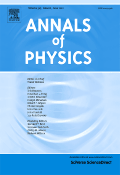
Annals of Physics
Fostering innovation and excellence in scientific research.Annals of Physics is a premier journal published by Academic Press Inc Elsevier Science, specializing in the expansive field of Physics and Astronomy. Since its inception in 1957, this journal has played a pivotal role in disseminating high-quality research and advancements across various sub-disciplines of physics. With a notable impact factor making it rank in the Q1 category for 2023, it stands among the top tier of scholarly publications, specifically sitting at Rank #63 out of 243 in the field, placing it in the 74th percentile according to Scopus metrics. Researchers are encouraged to submit their findings to reach a broad audience without the constraints of Open Access fees, promoting extensive visibility within the academic community. As we look ahead to 2024, Annals of Physics continues to be an essential resource for professionals, students, and academics striving to advance the frontiers of knowledge in physics and astronomy.

TECHNICAL PHYSICS
Connecting Researchers Through Cutting-Edge DiscoveriesTECHNICAL PHYSICS, published by PLEIADES PUBLISHING INC, is a prestigious journal that has been serving the scientific community since its inception in 1996. With a focus on the diverse realms of physics and astronomy, this journal is committed to publishing pioneering research that spans various aspects of theoretical and applied physics. Though currently categorized in the Q3 quartile for the year 2023, TECHNICAL PHYSICS holds considerable merit with a Scopus ranking of #56 out of 81 in its field, positioning it within the 31st percentile. The journal aims to provide a platform for researchers, professionals, and students to disseminate their findings and foster collaboration within the global physics community. While it does not currently offer open access, the journal remains a vital resource for those seeking to stay informed of the latest advancements and trends in technical physics. Based in the heart of New York, it continues to contribute to the evolution of this dynamic field.

Revista Cubana de Fisica
Pioneering Open Access in the Realm of Physics ResearchRevista Cubana de Fisica is a prominent open-access journal based in Cuba, published by EDICIONES CUBANAS. With its ISSN 0253-9268 and E-ISSN 2224-7939, this journal has been dedicated to advancing the field of Physics and Astronomy since its transition to open access in 2005, making high-quality research readily available to a global audience. Despite its current Scopus rank of #229 out of 243 in the genre, placing it in the 5th percentile, the journal remains a vital platform for disseminating innovative studies and findings, particularly within the broader scientific community in Latin America. Covering a diverse range of topics in physics, the magazine aspires to foster collaboration among researchers, students, and professionals alike, thus bridging the gap between theoretical exploration and practical application. The journal operates under the ambitious objective of contributing to the advancement of scientific knowledge from 2011 to 2024 and beyond, reinforcing its commitment to addressing contemporary challenges in physics and fostering a vibrant academic culture.
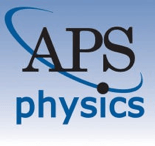
PHYSICAL REVIEW A
Shaping the Future of Atomic and Molecular StudiesPHYSICAL REVIEW A, published by the American Physical Society, is a leading journal in the field of Atomic and Molecular Physics and Optics, boasting a Q1 category ranking in its area for 2023. With an ISSN of 2469-9926 and an E-ISSN of 2469-9934, this journal plays a pivotal role in disseminating high-quality research findings, theories, and methodologies that shape current understanding and advancements in the discipline. Although not an open-access journal, it remains highly accessible to professionals and academia through institutional subscriptions. The journal's impactful contributions are evident from its Scopus rank of #70 out of 224 in the field, placing it in the 68th percentile for scholarly impact. As a hub of innovative research and a vital resource for both students and seasoned researchers alike, PHYSICAL REVIEW A remains essential for those seeking to stay abreast of breakthroughs in atomic and molecular studies, as well as optics and photonics.
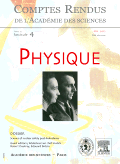
COMPTES RENDUS PHYSIQUE
Unlocking New Discoveries in Physics and AstronomyCOMPTES RENDUS PHYSIQUE, published by the esteemed Académie des Sciences, is a prestigious open access journal dedicated to the advancement of knowledge in the field of Physics and Astronomy. Since its inception, it has established a significant presence in the academic community, achieving an impressive Q2 ranking for the year 2023 in its category and holding a respectable 116th place within the Scopus rankings for General Physics and Astronomy. COMPTES RENDUS PHYSIQUE not only serves as a platform for high-quality research articles, reviews, and discussions but also strives to facilitate the dissemination of crucial scientific findings to a global audience, reflecting its commitment to open access since 2020. Based in Paris, France, the journal aims to bridge the gap between theoretical research and practical applications, supporting researchers, professionals, and students who seek to stay at the forefront of technological and scientific innovation. With its comprehensive coverage from 2002 to 2024, COMPTES RENDUS PHYSIQUE remains a vital resource for anyone engaged in the ever-evolving landscape of physics.
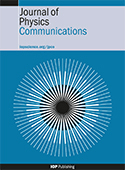
Journal of Physics Communications
Bridging Theory and Application in PhysicsJournal of Physics Communications, published by IOP Publishing Ltd, serves as a significant platform for the dissemination of innovative research in the realm of physics and astronomy. Since its inception in 2017, this Open Access journal has fostered a collaborative environment, allowing researchers, professionals, and students to share their findings and ideas without barriers. With an ISSN of 2399-6528, the journal has established its credibility in the academic community, achieving a ranking of Q3 in the 2023 category of Physics and Astronomy (miscellaneous), as well as a respectable position in Scopus with a rank of #122 out of 243 in its field. The journal's focus is on bridging theoretical concepts and practical applications, making it an essential resource for those engaged in the evolving landscape of physics. The Journal of Physics Communications not only aims to advance knowledge but also to inspire interdisciplinary collaboration, inviting contributions from diverse areas within physics. Authors and readers alike will find this journal particularly beneficial to stay updated on emerging trends and innovative research.
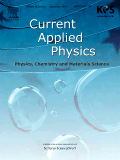
CURRENT APPLIED PHYSICS
Transforming Theoretical Concepts into Real-World Solutions.Current Applied Physics is a leading journal published by Elsevier, specializing in the dynamic fields of Physics and Materials Science. With an ISSN of 1567-1739 and an E-ISSN of 1878-1675, this journal focuses on the latest advancements and applications of physics principles in various practical domains. Operating from the innovative hub of Amsterdam, Netherlands, Current Applied Physics occupies a significant niche in the scientific community, evidenced by its Q2 ranking in both the Physics and Astronomy and Materials Science categories for the year 2023, along with impressive Scopus rankings that highlight its relevance in the fields of General Physics and General Materials Science. The journal's scope encompasses a wide range of topics, fostering interdisciplinary collaboration and facilitating the exchange of knowledge among researchers, professionals, and students. Each issue features peer-reviewed articles that contribute to the understanding and application of physical sciences, making it an essential resource for those aiming to stay at the forefront of research and innovation in applied physics.
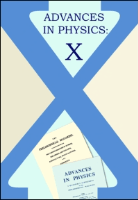
Advances in Physics-X
Fostering Innovation in Physics and AstronomyAdvances in Physics-X is a premier open-access journal published by Taylor & Francis Ltd, dedicated to advancing the frontiers of knowledge in the field of Physics and Astronomy. Since its inception in 2016, the journal has established itself as a vital platform for researchers and professionals, showcasing innovative research and cutting-edge theories that influence a broad array of sub-disciplines within physics. With an impressive impact factor and ranked in the 94th percentile among its peers, it resides in the Q1 category for Physics and Astronomy (miscellaneous), indicating its significant contributions to the academic community. Located in the United Kingdom, the journal encourages open access to foster wider dissemination and visibility of scholarly works, aligning with contemporary academic trends that prioritize global knowledge sharing. The ongoing commitment to publishing high-quality research ensures that Advances in Physics-X remains an essential resource for students, industry experts, and academics alike, helping to shape the future of physics research through collaboration and innovation.

Results in Physics
Where Physics Meets Open Access ExcellenceResults in Physics, an esteemed open-access journal published by ELSEVIER, has been a prominent platform for disseminating cutting-edge research in the field of physics since its establishment in 2011. With its ISSN 2211-3797 and E-ISSN 2211-3797, this journal proudly holds a Q2 ranking in the Physics and Astronomy category for 2023, showcasing its significance and quality within the scientific community. With a remarkable Scopus rank of #28 out of 243 in the general physics and astronomy domain, placing it within the 88th percentile, Results in Physics serves as a vital resource for researchers, professionals, and students alike, fostering a collaborative environment for the advancement of knowledge across various subfields. The journal aims to provide a rapid and unrestricted access to innovative findings, encouraging open scientific dialogue and enhancing the visibility of breakthrough research. Located in the Netherlands at RADARWEG 29, 1043 NX AMSTERDAM, Results in Physics continues to uphold its commitment to excellence and accessibility in the ever-evolving landscape of physics research.